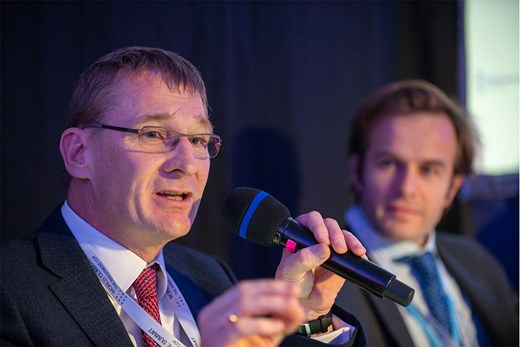Thought Leadership:
By Anton Koller, District Energy Divisional President, Danfoss Heating.
No doubt, the economic impact of COVID-19 is unlike anything we´ve dealt with before. The European Commission estimates that Europe´s economy will shrink by 7.4% this year (to put this figure into perspective, in 2009, at the back of the global financial crisis, it shrank by 4.5%). And as the world seeks to address the impact of this crisis, “there´s an opportunity to help rebuild society differently and make it more resilient” – to quote the European Commission President Ursula von der Leyen. Last week´s statements from European leaders, rallying behind economic recovery packages that support the green transition, mount to consensus and foresight that we can grow economies while decarbonizing.
For the past months, amid the economic slowdown caused by the coronavirus, we´ve seen a decline in the global energy demand by 3.8%, and a consequent drop in CO2 emissions. But make no mistake. Unless the wave of investment to restart economies is dedicated to the green transition, the rebound in emissions can be larger than the decline. To meet the 1.5°C Paris target, we must cut emissions by 7.6% this year, and every year in the next decade. Sustainable, efficient energy infrastructure, alongside building efficiency retrofit, are investments that can support countries boosting economic growth and mitigating climate change. The district energy sector can take up the challenge.
So, how can district energy support the green reboot?
1) Boost economic activity and enable job creation: employment in the district energy sector has grown over the years, today counting with approximately 50,000 employees in Germany and 23,000 in Denmark, for example. In Europe, there is potential to create additional 220.000 new and greener jobs until 2050 by expanding district energy networks. But not only. Accelerating and scaling-up investments in new networks, expanding and modernizing existing ones, and integrating sectors, will keep the economic wheel turning. The EU also hosts a strong manufacturing base of worldwide leading companies that can help economy flourish if they´re sent long-term market signals.
2) Decarbonization and sustainable heating and cooling trajectory: heating in buildings accounts for 30% of the EU’s energy consumption and is up to 75% reliant on fossil fuels, making its decarbonization one of the biggest challenges. District energy is a future-proof infrastructure that integrates a multitude of local sustainable energy sources e.g. excess heat, geothermal, and balances the electricity grid via sector integration. Studies show that a 50% district heating share (up from today’s 12%), together with sector integration, can lead to 13% primary energy savings, compared to a conventional energy system. Not to mention that it could reduce the total energy-system costs by approximately EUR70 bn per year!
3) Resilience to future shocks: district energy is a resilient urban infrastructure that ensures optimal operation during and after disturbances, like the current health crisis. It guarantees energy security, by switching between multiple local energy sources; it ensures continuous thermal response by using building demand-side management; and digitalization assures the possibility of remote operation of the network, continuous surveillance and access to real time data.
Point is: we can´t build better without creating a more resilient and sustainable energy system. This week, leading economists suggested that putting green policy initiatives at the heart of the stimulus packages could not only help shift the world closer to the decarbonization pathway but also offer the best economic returns. Thus, including strong links to ambitious climate action in the recovery packages, alongside clear policy measures, will help create a new prosperity model.
In Europe, we can use the European Green Deal as a framework for this exercise. That will help keep momentum and provide a clear direction for investments. Upcoming initiatives such as the renovation wave, the strategy on smart sector integration, as well as existing policies such as the Clean Energy for All package, can drive the green recovery if they are well implemented. As a sector, district energy is continuously providing ideas on the way forward.
This is not a matter of creating a new economy from scratch. We already have all the tools and technologies. We already have the plans and strategy. And there´s never been a better opportunity to turn these plans into actions and investments that will change the life of citizens and contribute to the quick recovery of our economies and our societies.
Learn more about energy efficiency and how we engineer tomorrow – https://www.danfoss.com/en/about-danfoss/insights-for-tomorrow/energy-efficiency/
Media and PR contact – Danfoss Sub-Saharan Africa – Lynne McCarthy mccarthyl@danfoss.com
About Danfoss
Danfoss is engineering technologies that enable the world of tomorrow to be better, smarter and more effective. In growing cities, we ensure the supply of fresh food and optimal comfort in homes and offices, while meeting the need for energy-efficient infrastructure, connected systems and integration of renewable energy. Our solutions are used, for example, for cooling, air conditioning, heating, controlling electric motors and mobile equipment. Our innovative engineering can be traced back to 1933, and today Danfoss is a global leader with 28,000 employees and sales in more than 100 countries. We are privately owned by the founder’s family. Read more about us at www.danfoss.com.



